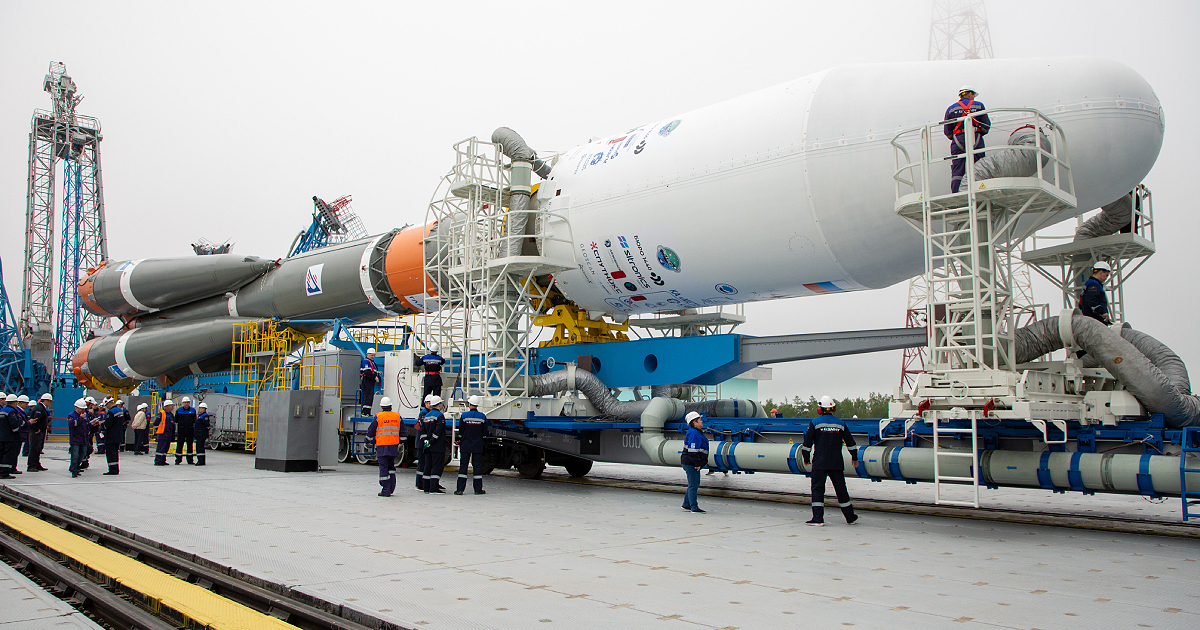On 27 June, at 14:34:49 (Moscow time) the launch vehicle Soyuz-2.1b and the Fregat upper stage blasted off from the Vostochny Cosmodrome. Roskosmos acted as an organizer while its subsidiary Glavkosmos operated the launch of an additional payload.
The rocket is going to send into space not only the hydrometeorological satellite Meteor-М № 2-3 but also 42 small spacecraft, among which is StratoSat TK-1. It was designed by our specialists by order of Stratonavtika company within the Space-π project as a part of the program «On duty for the planet», which is supported by the Innovation Assistance Foundation.
Specially for the new CubeSat, Geoscan designed a truncated version of the Geoscan-3U platform whilst Stratonavtika made a 1U container serving as a payload. It contains six tiny picosats (spacecraft weighing from 100 grams to 1 kilogram) designed by the company «Malye Kosmicheskie sistemy» (Small Space Systems). These are TinySats, and CubeSat vehicle and its launch infrastructure are used to send them into space.


There are two types of picosats in StratoSat TK-1: four TinySats 1TU, shaped like a 5 cm cube, and two TinySats 2TU, which are rectangular parallelepipeds with dimensions of 5x5x10 cm. The first four satellites have a 0,3–2 МP camera as a payload, the others — a 2 MP camera and a computer which architecture is similar to Raspberry Pi, a single-board system for training in programming. This will allow running programs written by students within the Space-π project.
After the StratoSat TK-1 undergoes all necessary checks for several days, a command will be given to ignite the securing thread on the container: it will open, and the picosats will be released into free flight. The departure of the spacecraft will be captured on video by the Geoscan HRCAM-S camera, designed in Geoscan. The next StratoSat TK-1’s task will be to take photos of the Earth for educational purposes using our second camera, the Geoscan HRCAM-M with long-focus lens. By the way, its technical characteristics are significantly better than the camera on Geoscan-Edelveis, Geoscan’s first spacecraft, which is nearing completion of its primary mission.
As Alexander Khokhlov, head of the small spacecraft development department at Geoscan puts it, ‘For our company, this is the second CubeSat that went into space, and the first one we made for a client as a part of the Space-π project. We have designed a platform for the StratoSat TK-1 spacecraft as well as cameras that will capture the departure of tiny satellites after opening the shipping container. But this is the task for next month. Now we have to make sure that the main systems of the StratoSat TK-1 are working properly. In the next few hours, we are starting to receive telemetry by the use of the ground control station, to establish two-way communication and provide necessary tests. The most exciting part is the verification of the camera’s performance and the proper functioning of the magnetic orientation system, which is essential for capturing good photos of the picosats’.
The today’s launch of 39 satellites, including 16 CubeSats 3U by the Space-π project, broke a record in the number of Russian small spacecraft launched simultaneously. The previous record was set on August 9, 2022, when 16 Russian spacecraft were launched into space from the Baikonur Cosmodrome.
Source of the photo: Stratonavtica, LLC
Cover photo and gallery: State Corporation Roscosmos






